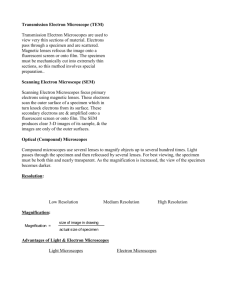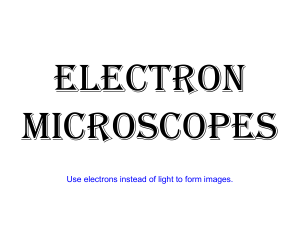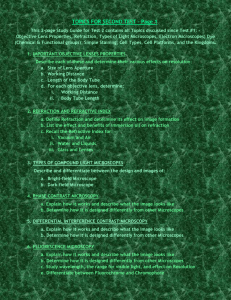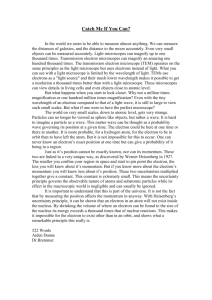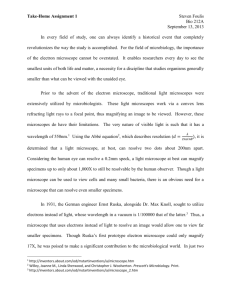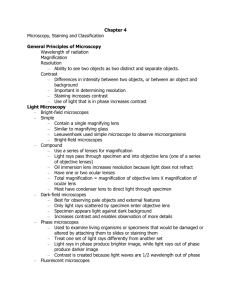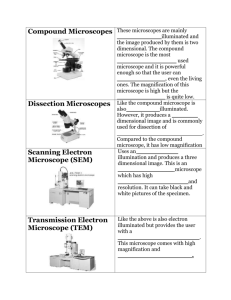Section 1.4 Introduction
advertisement
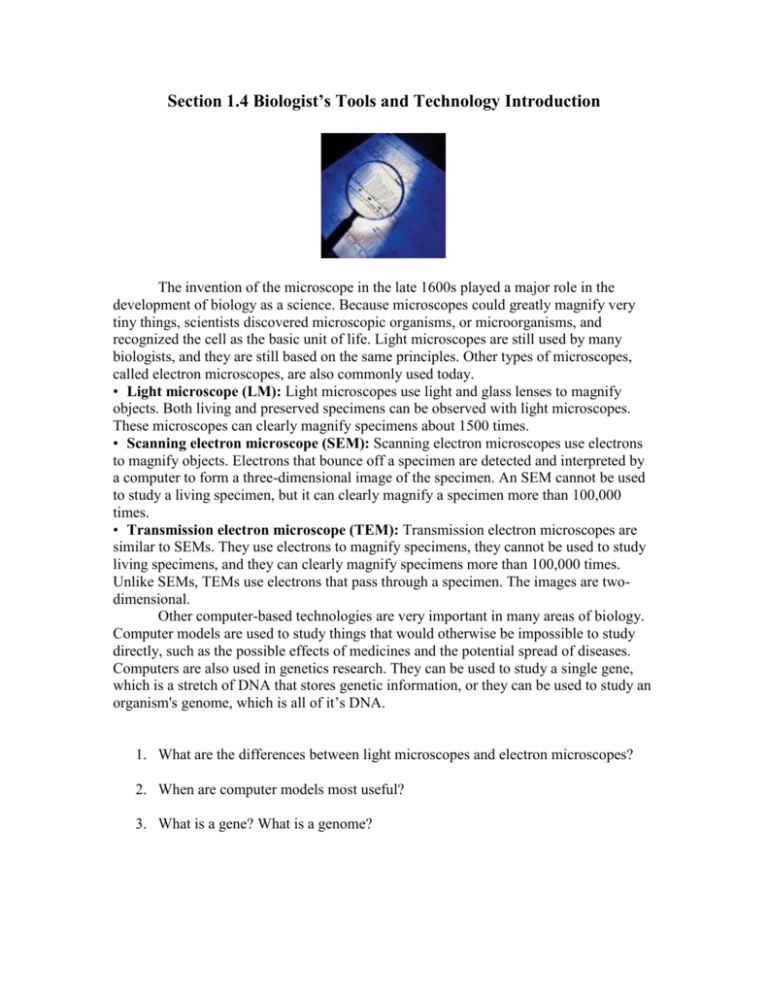
Section 1.4 Biologist’s Tools and Technology Introduction The invention of the microscope in the late 1600s played a major role in the development of biology as a science. Because microscopes could greatly magnify very tiny things, scientists discovered microscopic organisms, or microorganisms, and recognized the cell as the basic unit of life. Light microscopes are still used by many biologists, and they are still based on the same principles. Other types of microscopes, called electron microscopes, are also commonly used today. • Light microscope (LM): Light microscopes use light and glass lenses to magnify objects. Both living and preserved specimens can be observed with light microscopes. These microscopes can clearly magnify specimens about 1500 times. • Scanning electron microscope (SEM): Scanning electron microscopes use electrons to magnify objects. Electrons that bounce off a specimen are detected and interpreted by a computer to form a three-dimensional image of the specimen. An SEM cannot be used to study a living specimen, but it can clearly magnify a specimen more than 100,000 times. • Transmission electron microscope (TEM): Transmission electron microscopes are similar to SEMs. They use electrons to magnify specimens, they cannot be used to study living specimens, and they can clearly magnify specimens more than 100,000 times. Unlike SEMs, TEMs use electrons that pass through a specimen. The images are twodimensional. Other computer-based technologies are very important in many areas of biology. Computer models are used to study things that would otherwise be impossible to study directly, such as the possible effects of medicines and the potential spread of diseases. Computers are also used in genetics research. They can be used to study a single gene, which is a stretch of DNA that stores genetic information, or they can be used to study an organism's genome, which is all of it’s DNA. 1. What are the differences between light microscopes and electron microscopes? 2. When are computer models most useful? 3. What is a gene? What is a genome?

